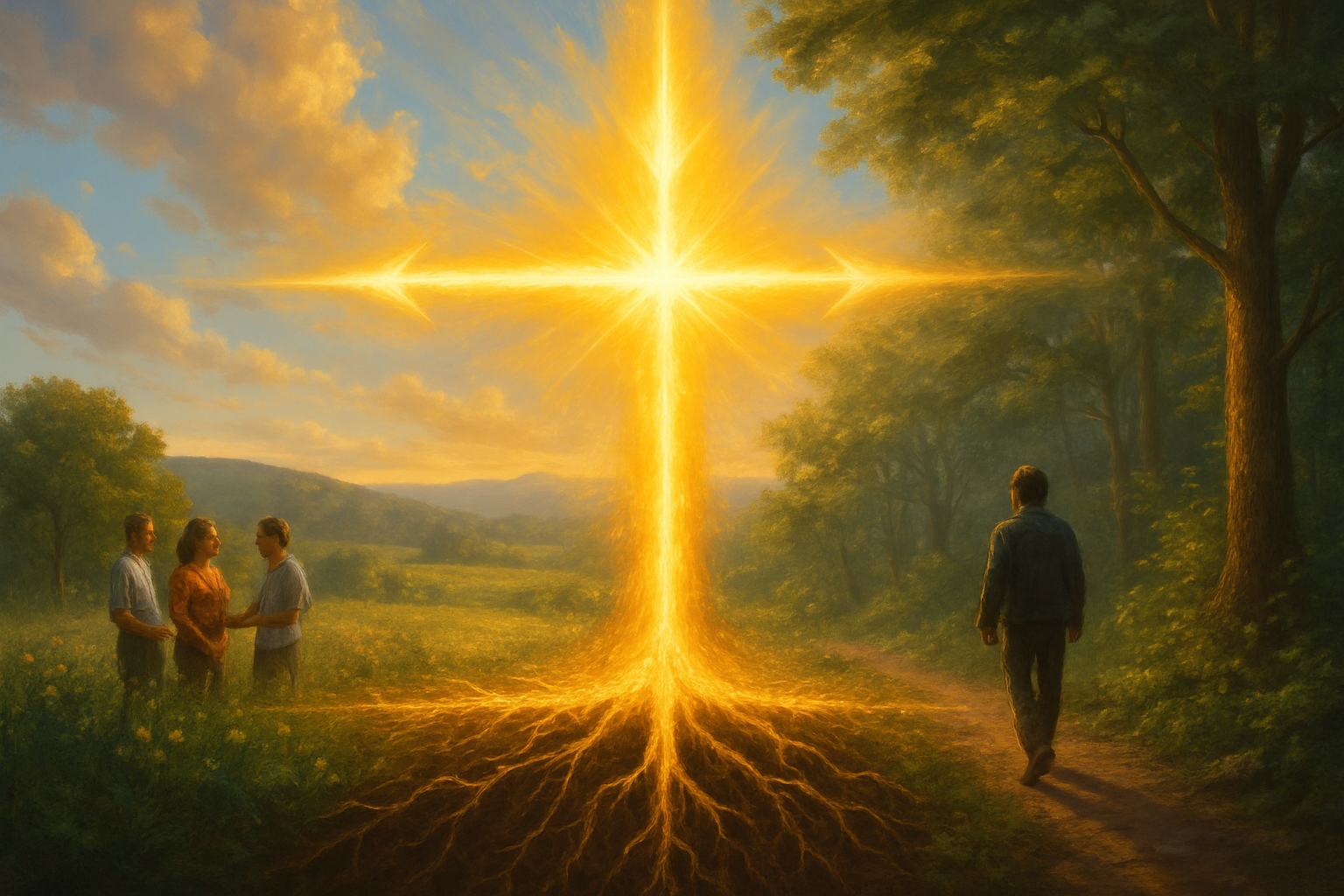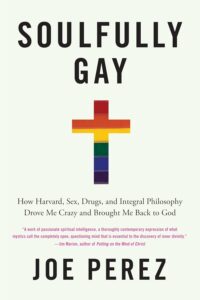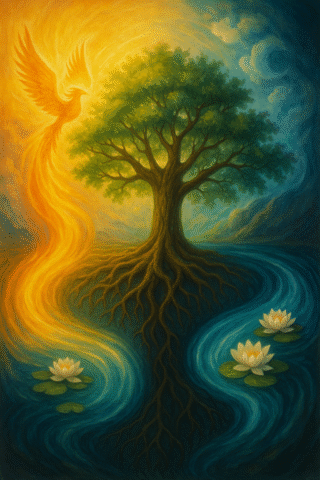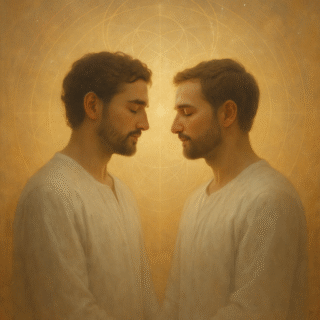The Foundational Image of My Radically Embodied Concept of Human Being and Becoming
There’s an image that keeps returning to me.
Familiar. Simple. And yet, unbearably profound.
The Cross.
Not just a religious symbol. Not just a relic of history. But a cosmic archetype—a living axis of meaning. The Cross has become, for me, the foundational image of human being and becoming. It’s how I understand the soul’s unfolding. It’s how I make sense of what it means to be gay, to be spiritual, to be wounded and radiant and somewhere in between.
It’s not the Sunday School Cross I once knew. It’s something deeper—something radically embodied. A cruciform anthropology. A map of the sacred human condition.
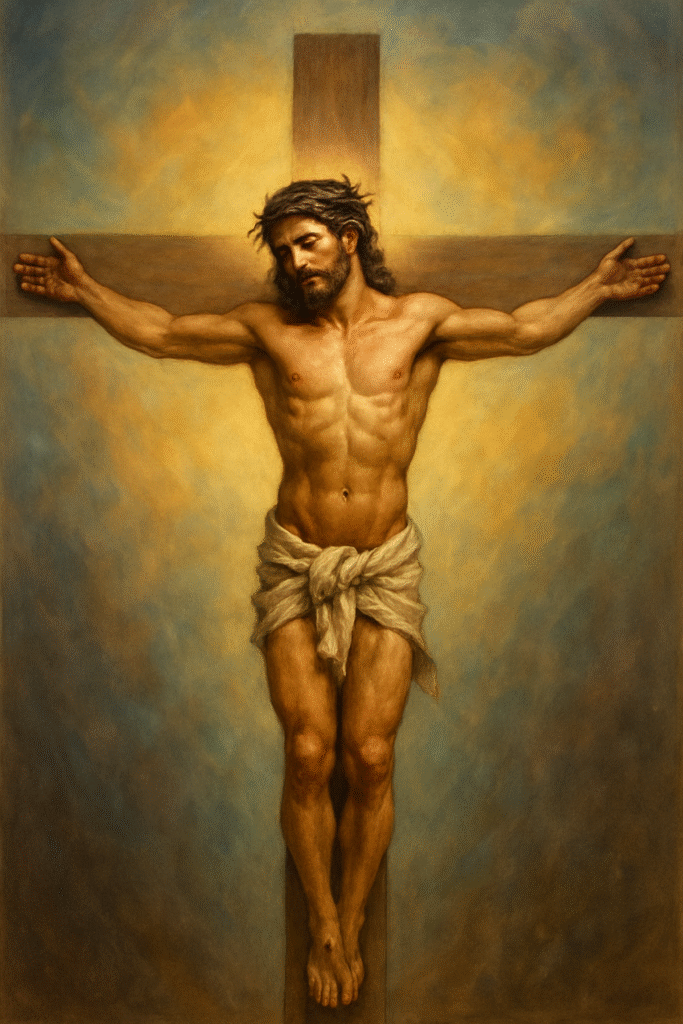
The Cross Is Not a Ladder
For a long time, I thought spirituality meant escape. Up and out. Clean up your mess, shed your longings, read books for hours on end, transcend the body, and climb toward God.
But the Cross disrupts that illusion.
It doesn’t ascend. It descends. It bleeds. It sweats. It stretches down and out, into the depths of matter and relationship and pain—not to punish, but to reveal.
What if the Cross is not where God failed, but where God chose to be most fully human?
That’s the shift.
The Cross doesn’t ask us to rise above our lives. It asks us to fall into them—faithfully, vulnerably, wholly.
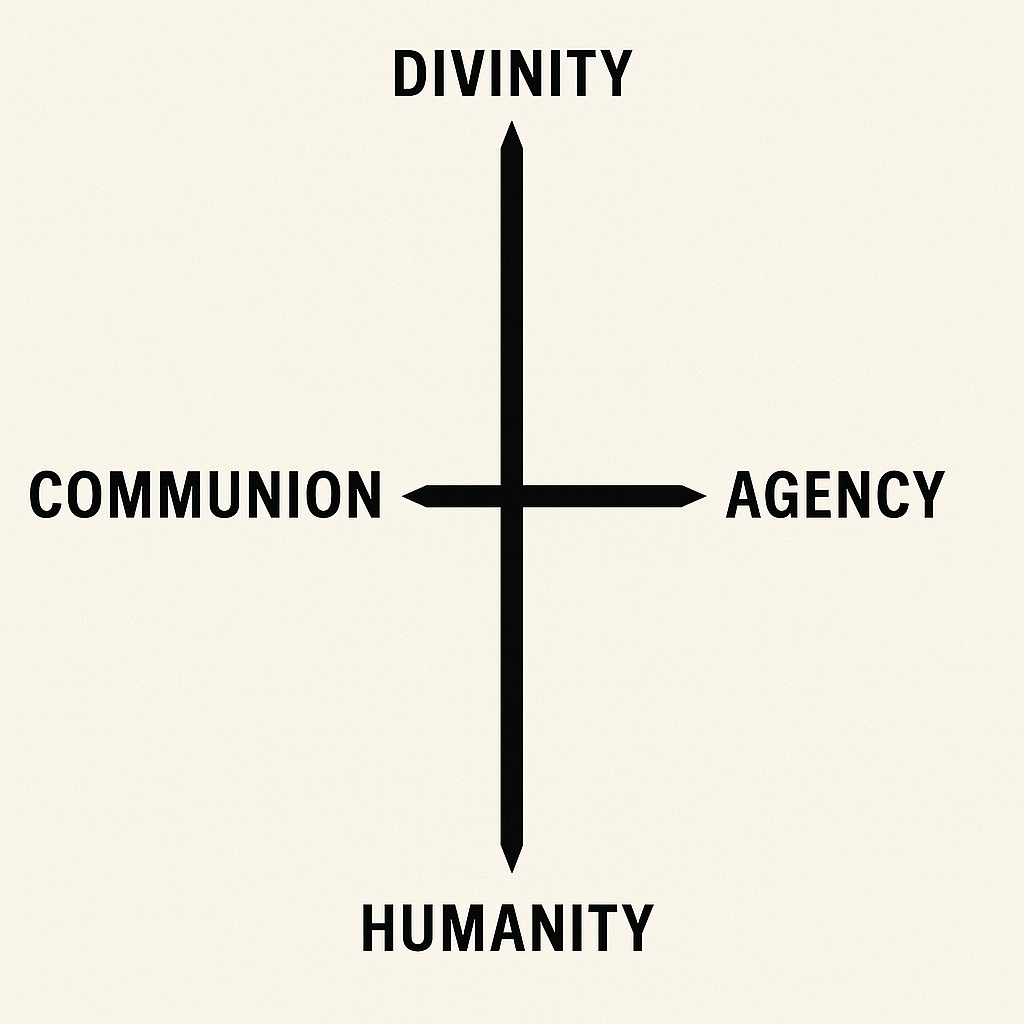
The Horizontal and the Vertical
When I look at the Cross now, I see not a single direction, but two great currents intersecting.
- The horizontal axis: arms outstretched in embrace—of difference, of relationship, of polarity and presence. This is the world of gender and touch, self and other, body and history. It is the realm of Being.
- The vertical axis: Spirit rising and descending, the soul’s dance between transcendence and immanence, between God beyond and God within. This is the path of Becoming.
They do not compete. They cross. And where they meet, life happens. Revelation happens.
This is not theology as theory. This is theology as sacred geometry—drawn on the body, traced through desire, lived in the shape of a human soul.
(Beginning in 2010, I added another crucial symbol to the family of sacred geometries that draws my soul aloft… But that is a story for another day.)
Integral Theory Meets the Crucified God
Ken Wilber’s Integral Theory helped me name what I had already felt in my bones. Reality, he says, is made of holons—wholes that are also parts of greater wholes. And each holon is shaped by four irreducible drives:
- Agency – to assert, to differentiate, to be
- Communion – to connect, to merge, to belong
- Self-Transcendence – to grow beyond what has been
- Self-Immanence – to root, to deepen, to come home
Now map these onto the Cross:
- Left and Right: Communion and Agency. The feminine and masculine. The reach for connection and the stand in integrity.
- Up and Down: Transcendence and Immanence. The yearning to rise, and the descent into sacred flesh.
This is not just a diagram. It’s a mirror. It’s my mirror. Yours, too.
Because we are all holons, shaped by this divine tension. Stretched between heaven and earth, self and other, desire and surrender.
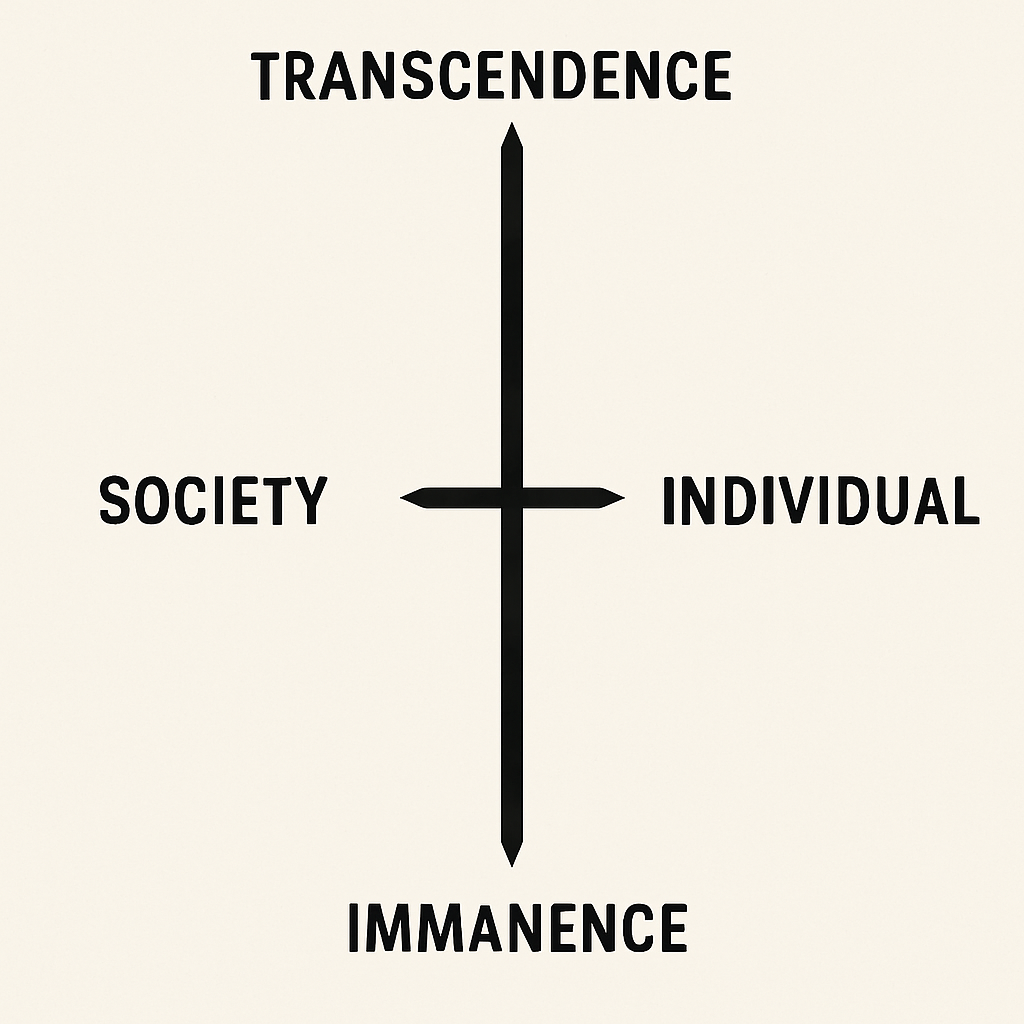
The Erotic Grammar of the Cross
When I came out as gay, I assumed my erotic life and my spiritual life would always be in conflict. They felt like rivals in a cosmic tug-of-war.
But what if they were never meant to be separate?
What if homoeros—the desire for the same—is not a deviation but a sacred descent into the depths of presence?
And what if heteroeros—the desire for the other—is the soul’s way of reaching beyond itself toward ecstatic transcendence?
What if both are already written into the Cross?
Christ doesn’t reject the body. He inhabits it fully. He doesn’t choose between eros and agape. He becomes the meeting point of both. The Cross is not anti-erotic. It is where desire and divinity kiss.
The Gay Body as Sacred Site
We have been told—many of us—that our bodies are the problem. That our longings are too much. That God cannot dwell in flesh like ours.
But the Cross says otherwise.
The Cross says: here is where God dwells.
In the queer body. The Black body. The disabled body. The aging body. The erotic body. The AIDS-ravaged body. The crucified body. These are not obstacles to holiness—they are its homes.
We do not have to transcend the body to touch the divine. We have to enter the body more deeply. In its grief. In its joy. In its pleasure. In its pain.
The wound is not the place we hide. It is the place where God arrives.
The Unitive Way
I call this path The Unitive Way.
It is the journey of integration—of body and soul, eros and ethics, gayness and grace. It is a nondual path, where opposites do not cancel but converge. Where holiness is not escape, but embodiment. Where the Cross is not a symbol of shame, but a map of wholeness.
The Unitive Way is:
- Nondual – beyond either/or
- Embodied – beginning in the body, not beyond it
- Erotic – honoring desire as sacred current
- Integral – weaving it all together, nothing left out
To walk this path is to open your arms—to your own life, to your longing, to the world. To rise. To descend. To stop climbing and finally rest in the shape of love itself.
The Cross Is the Prototype
In a world obsessed with performance, the Cross whispers: just be here.
In a culture afraid of weakness, it shows us a God who bleeds.
The Cross isn’t about shame. It isn’t about sin-management. It is the divine blueprint of what it means to be fully human.
It holds all the tensions I live with:
- Gay and spiritual
- Cis-gendered and nonbinary
- Erotic and ethical
- Masculine and feminine
- Agency and communion
- Transcendence and immanence
- Heaven and earth
- Death and resurrection
And it tells me:
You are not outside the sacred story.
You are the sacred story.
Final Words
If you’ve ever felt like your desires disqualify you…
If you’ve ever believed you had to choose between your body and your soul…
If you’ve ever wondered if your wounds could be holy…
Then meet me here.
At the Cross.
Feel the stretch.
Feel the stillness.
Feel the Love that holds you—crucified and rising.
Because the Cross isn’t just at the center of my theology.
It’s at the center of everything.
